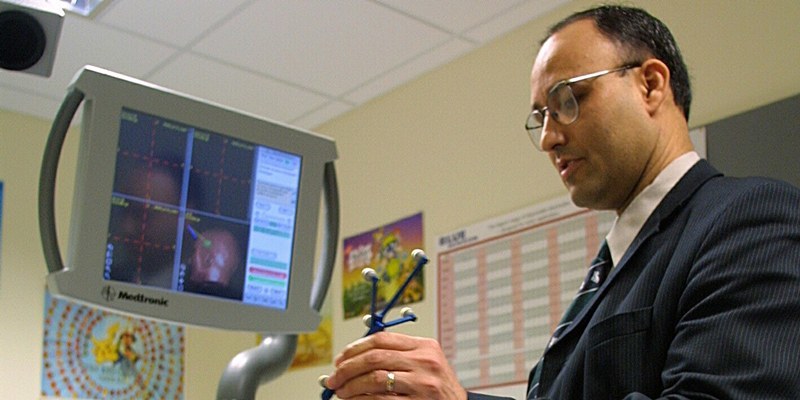A “sophisticated vacuum cleaner for brain tumours” that continues to save lives at Ninewells Hospital is the legacy of a public appeal almost 30 years ago.
The equipment, known as an ultrasonic aspirator, selectively seeks out and removes tumour cells and is the latest generation of what began as the Cavitron ultrasonic scalpel.
In 1983 a neurosurgeon at Dundee Royal Infirmary operated on a 14-year-old boy and removed a tumour from his spine, using a borrowed Cavitron scalpel. It was leading technology at the time and not a priority for scarce health service resources.
Within weeks, and at a time when Dundee was reeling from mass redundancies and was in deep recession, the generosity of the public in the city and far beyond surpassed the target of raising £60,000 to buy surgeon Ivan Jacobson a Cavitron of his own.
By November 1983, the local health board announced the Cavitron Appeal was closed, having reached the astonishing total of £125,000.
After purchasing the Cavitron, excess funds were to be used for maintenance and running costs.
In the 21st century, the legacy of that fund-raising effort continues to support brain tumour victims, because though the appeal is closed, the fund continues, gaining interest every year.
The latest set of accounts for NHS Tayside’s Endowment Fund the pot that holds all Tayside hospital charity funds shows there remains £101,000 in the Cavitron Fund, up £1000 on the previous year.
Professor Sam Eljamel, successor to the late Mr Jacobson, is now the Cavitron fund holder and explained the cash is still being used to help brain tumour patients.
“The name ‘Cavitron’ has been dropped and the latest generation of the equipment is called a Selecta ultrasonic aspirator,” Mr Eljamel said. “We are now, I think, on the third generation.
“What it does is selectively resonate the tumour cells and sucks them out, leaving the blood vessels and architecture of the tissue intact.
“It is a sophisticated vacuum cleaner for tumours. We use it for all tumours in the brain and spine.”
Similar equipment is also used for liver and kidney operations in the hospital but that equipment is not provided from the fund.
“I think we use some exchequer money (that is from the core NHS budget) because it has become standard equipment but (in neurosurgery) we still use the Cavitron Fund to maintain the system and get bits and pieces for it.
“We also use the fund for equipment which can complement the ultrasonic aspirator.”
Prof Eljamel said the number of times the equipment is used varies each year but neurosurgeons in Ninewells would use it between 60 and 100 times.
